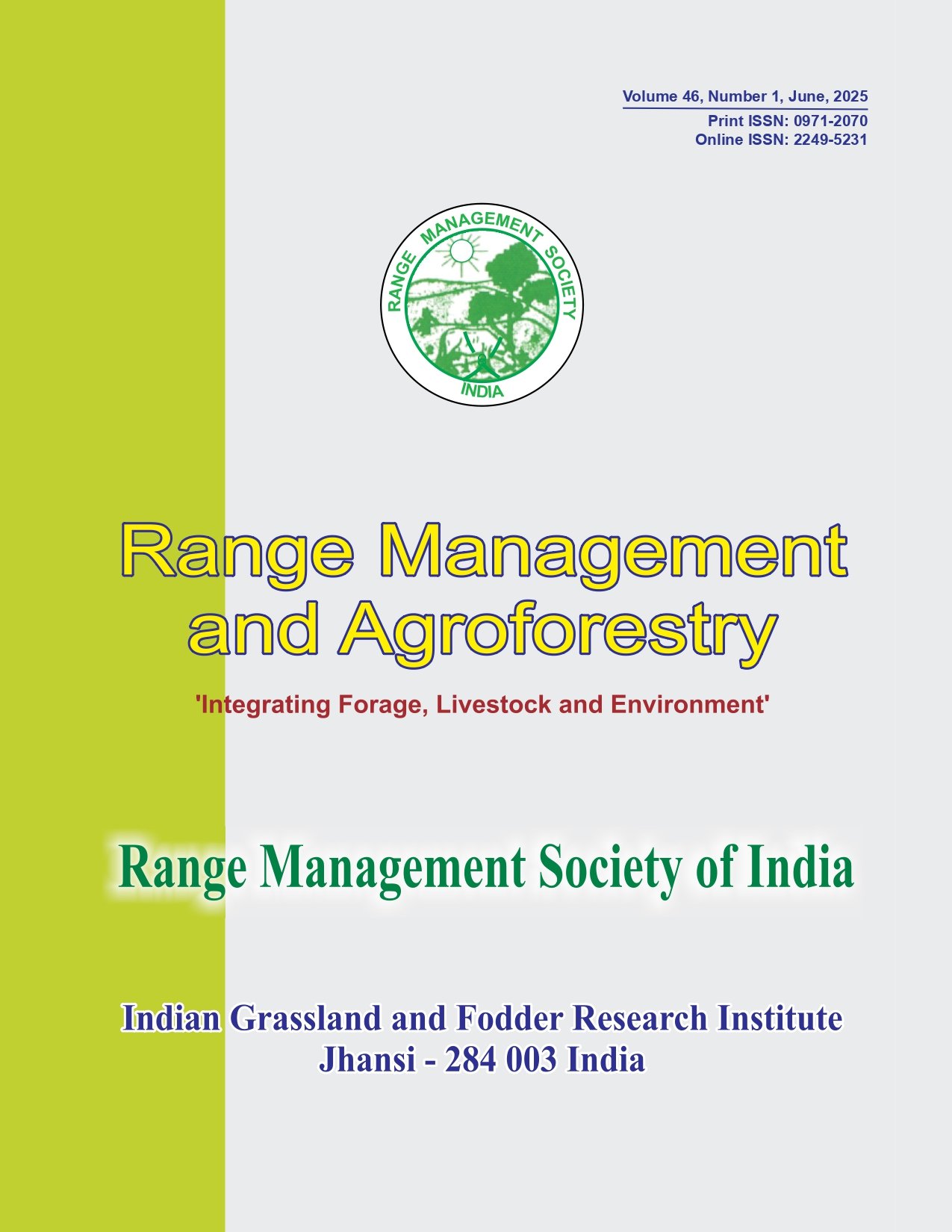Genetic diversity studies in local collections and advanced generations of lucerne (Medicago sativa L.) genotypes for fodder yield and yield-attributing traits
DOI:
https://doi.org/10.59515/rma.2024.v45.i1.04Abstract
Precise information about genetic divergence is vital for a productive breeding program, as genetically diverse parents produce high heterotic effects, producing desirable segregants with higher yield levels. This study assessed seventy genotypes and four checks to estimate the extent of genetic diversity based on ten morphological traits attributed to yield. The genotypes showed significant differences for all the traits considered. Based on the Mahalanobis D2 statistics, the genotypes were grouped into ten clusters, with cluster I having the maximum number of genotypes, whereas cluster IX had a single genotype. The average inter-cluster distances revealed that the genotypes in clusters VI and VII were more diverse. In contrast, clusters I and III genotypes had the shortest inter-cluster distances, indicating genetic closeness. The study revealed a broad genotypic diversity within and between the alfalfa germplasm collections. The genotypes in clusters I, III, and V provide excellent genetic material for alfalfa yield improvement. They offer a possible way to exploit the existing variability to develop superior populations or composites








